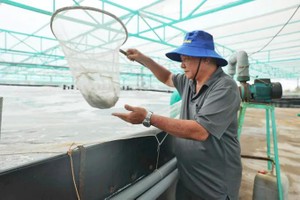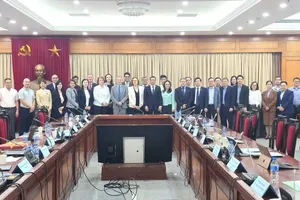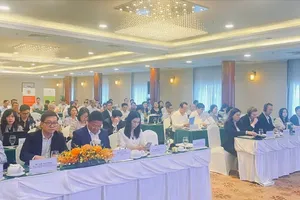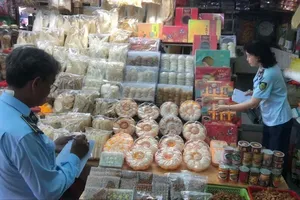 |
Textile and garment businesses learn about automatic machine systems using new technology at the Textile and Garment Industry Exhibition, held from October 25 to 28 in Ho Chi Minh City (Photo: SGGP) |
In 2022, textile and garment industry exports reached US$37.5 billion, but from the beginning of the year until now, orders have decreased sharply, and it is forecast that in 2023, the industry's exports will decrease by about 20 percent. The industry faces huge challenges.
Exports plummeted
Vitas said that businesses face several barriers in their exporting journey, which they need to overcome, especially new barriers from the US and European markets. According to Chairman of Vitas Vu Duc Giang, authorities of the US market have announced to apply green manufacturing standards this year which caused nearly 80 percent of Vietnam's textile and garment export enterprises to bump into difficulties.
Worse, exporters of garment products to the European market which has applied green barriers over the past 3 years have witnessed difficulties. After the European Commission (EC) proposed the goods must comply with ecological design criteria, roughly 90 percent of Vietnamese textile-garment and leather-footwear firms have been unable to export products to the EU. In case businesses cannot improve their production lines according to the above standards, the European market still accepts export permission but Vietnamese exporters must pay additional carbon tax which makes businesses more difficult to compete on price.
In the first 7 months of 2023, textile and garment exports to the European market reached $2.3 billion, down 9.6 percent over the same period. Entering August 2023, exports decreased more sharply, reaching only $330 million, down 17 percent over the same period. Furthermore, the industry’s revenue continued to decrease further in September when orders from major global fashion brands such as Decathlon, Nike, and Adidas dropped.
General Director of Viet Thang Jean Company Pham Van Viet said to satisfy green standards, businesses need to invest about $12 million in an automatic textile production line. Vietnamese enterprises are facing difficulties in the competition to meet the EU’s green requirements.
Experts: Comprehensive solutions are needed
According to experts, with the current circumstances, the expectation that the textile and garment industry's revenue will be about $48 billion this year is unachievable. Statistics from Vitas show that from the beginning of the year until now, about 3,000 textile and garment enterprises countrywide have had to stop operation; most of them are enterprises with small production scale employing 200 workers meanwhile large-scale enterprises that have rapidly converted production technology to meet green standards are facing difficulties due to a decrease in orders.
In particular, Vietnam's textile and garment industry is currently facing fierce competition from products from countries such as Cambodia and Bangladesh. Averagely, labor and land rental costs of Vietnamese enterprises account for 32 percent of the cost of textile products, while this cost in Cambodia and Bangladesh only accounts for 12 percent, said a textile industry expert.
Textile and garment businesses are facing a turning point that they need to transform to survive and develop. Mr. Jean Jacques Bouflet, Vice President in charge of policy of the European Chamber of Commerce in Vietnam (EuroCham), said that global consumers increasingly favor environmentally friendly products. This has led Vietnamese businesses to face the challenge of transforming their production line into a green supply chain.
To solve these difficulties, Vietnamese businesses need to ensure compliance with green standards by applying more stringent environmental regulations, investing heavily in research, and development and improving production infrastructure in combination with training of workforce.
Being an entrepreneur, General Director of Viet Thang Jean Company Pham Van Viet said that the Government and localities need to promote more appropriate and practical capital support policies. In the immediate future when businesses are pouring all investment in technology, the State must reduce the corporate income tax rate to about 10 percent as well as accelerate disbursement of capital support packages with preferential interest rates.
He added that Vitas will continue to propose to the Ministry of Industry and Trade and Vietnamese trade counselors abroad to increase trade promotion activities, directly connecting domestic businesses with buyers and global fashion brands to increase orders, expand market share, and exploit potential opportunities for new markets.
At the same time, the Ministry should connect related organizations to support textile and garment enterprises in green transformation such as the use of clean energy, application of recycling solutions and implementation of digital transformation, Mr. Vu Duc Giang emphasized. These will be the synchronized solutions for businesses to quickly catch up with green trends and new consumer trends globally, restoring production capacity and competitiveness.
























